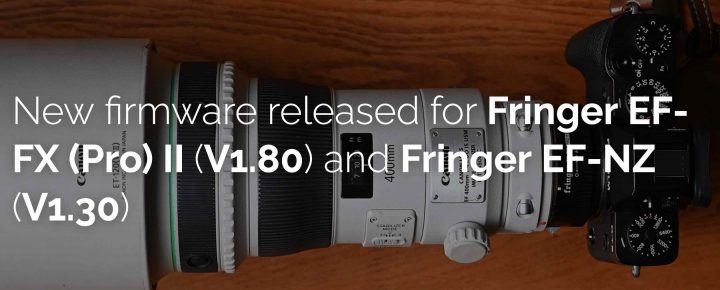Fringer EX-FX (Pro) II Smart Autofocus Adapter Firmware 1.90 Released

Fringer has released firmware 1.80 for the Fringer EF-FX Pro II and Fringer EF-FX II smart autofocus adapters.
Fringer EX-FX (Pro) II – Version 1.90
- Added following lenses to the tested and optimized lens list:
– EF 400mm f/2.8L IS II USM
– EF 400mm f/2.8L IS II USM + 1.4X
– EF 400mm f/2.8L IS II USM + 2X
– EF 70-210/3.5-4.5 USM - Fixed PDAF issues for some lens of the following models: Lens didn’t get recognized by the adapter due to different lens firmware version.
– Sigma 24-105/4 ART - Fixed a compatibility issue with X-T3 firmware 4.0: under certain circumstances, contrast AF may fail. This issue may also affect other cameras like X-T4 and X-S10.
- Fixed camera freeze issue on cameras equipped with X-Trans IV CMOS. When
– In bright environment,
– Adapting telephoto, ultra-fast or macro lenses,
– Aperture is NOT wide open,
– Subject is far away from current focus point and is so blur that phase detection doesn’t work,
Auto focus may fail. Sometimes, especially when using AF-ON button or touch screen to AF, it may freeze the camera. Even the power switch doesn’t work. This problem has been fixed. Affected cameras include X-T3 (firmware 2.0 or later), X-T30, X-T4, X-Pro3, X-S10.
As the bug fixes are important, upgrading is highly suggested.
Please visit the Fringer website here to download the new firmware and its release notes. Follow the instructions in the release notes to upgrade your adapter.




